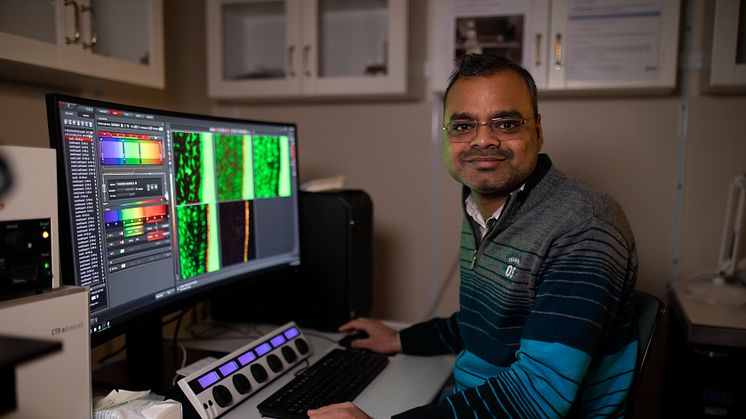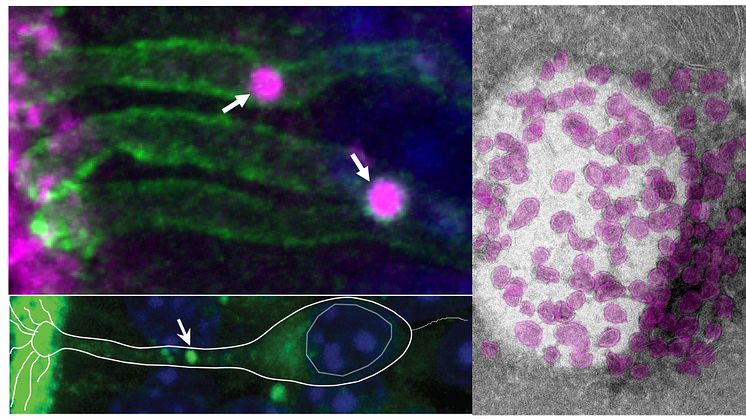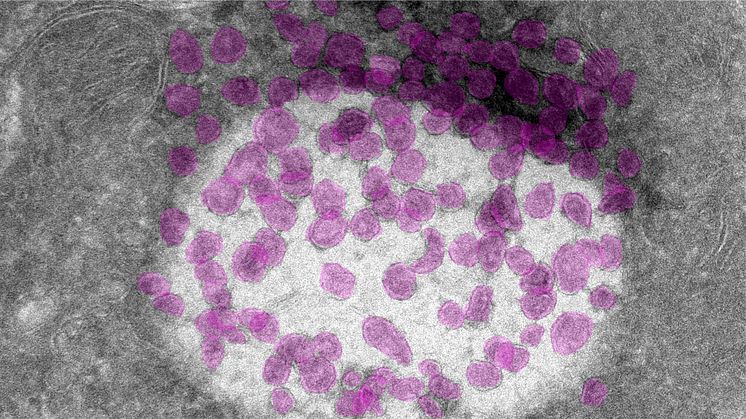
Press release -
New cellular component with importance for the sense of smell discovered
Researchers at Umeå University, Sweden, have discovered a previously unknown cellular component, an organelle, inside neurons that we use to perceive smell. The discovery may have implications for further research on impaired sense of smell, which is a common symptom of COVID-19.
“A prerequisite for finding a treatment for impaired sense of smell is to first understand how the sense of smell works, says Staffan Bohm,” Professor at the Department of Molecular Biology at Umeå University.
What the researchers have discovered is a so-called organelle inside nerve cells, that has not previously been observed. The newly discovered organelle has been given the name multivesicular transducosome by the researchers. The discovery was made possible thanks to Umeå University's unique microscopy infrastructure.
Organelles are distinct ’workstations’ inside cells that can be compared to the different organs of the body, i.e. different organelles have different functions in the cell. Most organelles are common to different cell types, but there are also organelles with specific functions that only occur in certain cell types. Olfactory nerve cells have long projections, i.e. cilia, that protrude into the nasal cavity and contain the proteins that bind odorous substances and thus initiate nerve impulses to the brain. The conversion of odour into nerve impulses is called transduction and the newly discovered organelle, contains only transduction proteins.
The role of the transductosome is to both store and keep transduction proteins separate from each other until they are needed. Upon olfactory stimulation, the outer membrane of the organelle ruptures, releasing the transduction proteins so that they can reach the cilia of the neuron, and smell is perceived.
The researchers also discovered that the transductosome carries a protein called retinitis pigmentosa 2, RP2, which is otherwise known to regulate transduction in the eye's photoreceptor cells. If the RP2 gene is mutated, it can cause a variant of the eye disease retinitis pigmentosa that damages the eye's light-sensitive cells.
“A question for further research is whether the transductosome has a role in vision and whether it is present in brain neurons that are activated by neurotransmitters and not light and smell. If so, the discovery may prove even more significant," says Staffan Bohm.
The transducosome was discovered when researcher Devendra Kumar Maurya used a new technique called correlative microscopy. The technique combines electron microscopy and confocal microscopy so that a cell's internal structures and the location of different proteins can be imaged simultaneously. Crucial to the discovery was Devendra's method development, which enabled the technique to be used to analyse intact neurons in tissue sections.
The study is published in the scientific journal Nature Communications.
About the study
A multivesicular body-like organelle mediates stimulus-regulated trafficking of olfactory ciliary transduction proteins
Devendra Kumar Maurya, Anna Berghard, Staffan Bohm
DOI: 10.1038/s41467-022-34604-y.
For more information, please contact
Staffan Bohm
Phone: +46 90 785 08 19
Mobile: +46 70 972 25 95
E-mail: staffan.bohm@umu.se
Topics
Umeå University
Umeå University is one of Sweden’s largest institutions of higher education with over 36,000 students and 4,000 faculty and staff. The university is home to a wide range of high-quality education programmes and world-class research in a number of fields. Umeå University was also where the revolutionary gene-editing tool CRISPR-Cas9 was discovered that has been awarded the Nobel Prize in Chemistry.
At Umeå University, distances are short. The university's unified campus encourages academic meetings, an exchange of ideas and interdisciplinary co-operation, and promotes a dynamic and open culture in which students and staff rejoice in the success of others.




